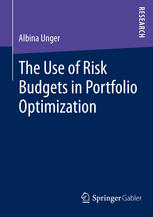

Most ebook files are in PDF format, so you can easily read them using various software such as Foxit Reader or directly on the Google Chrome browser.
Some ebook files are released by publishers in other formats such as .awz, .mobi, .epub, .fb2, etc. You may need to install specific software to read these formats on mobile/PC, such as Calibre.
Please read the tutorial at this link: https://ebookbell.com/faq
We offer FREE conversion to the popular formats you request; however, this may take some time. Therefore, right after payment, please email us, and we will try to provide the service as quickly as possible.
For some exceptional file formats or broken links (if any), please refrain from opening any disputes. Instead, email us first, and we will try to assist within a maximum of 6 hours.
EbookBell Team

4.8
34 reviewsRisk budgeting models set risk diversification as objective in portfolio allocation and are mainly promoted from the asset management industry. Albina Unger examines the portfolios based on different risk measures in several aspects from the academic perspective (Utility, Performance, Risk, Different Market Phases, Robustness, and Factor Exposures) to investigate the use of these models for asset allocation. Beside the risk budgeting models, alternatives of risk-based investment styles are also presented and examined. The results show that equalizing the risk across the assets does not prevent losses, especially in crisis periods and the performance can mainly be explained by exposures to known asset pricing factors. Thus, the advantages of these approaches compared to known minimum risk portfolios are doubtful.